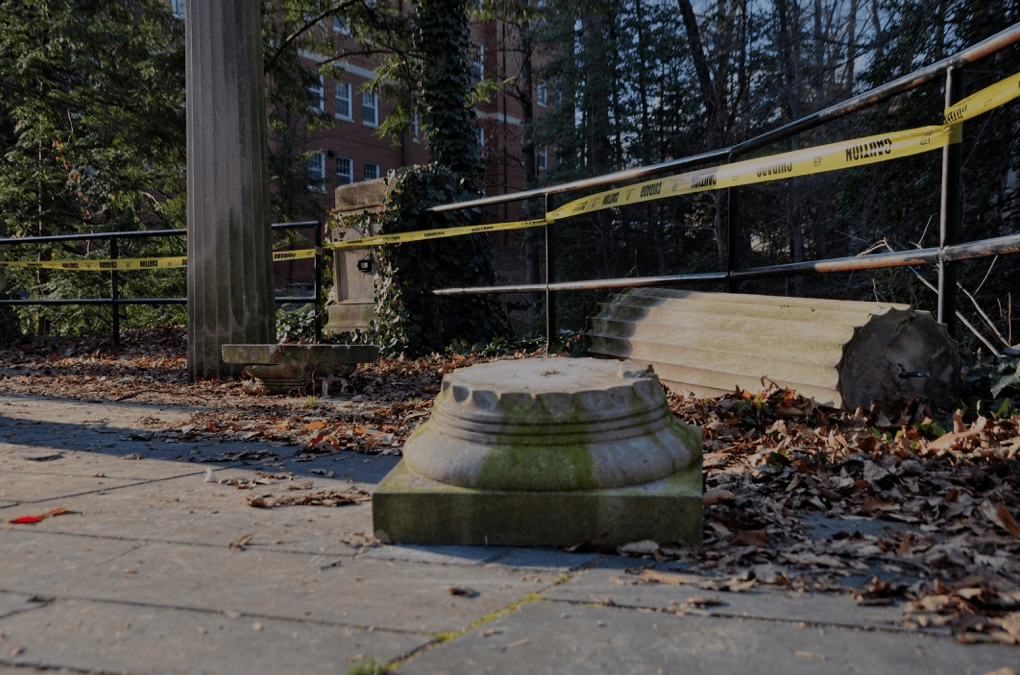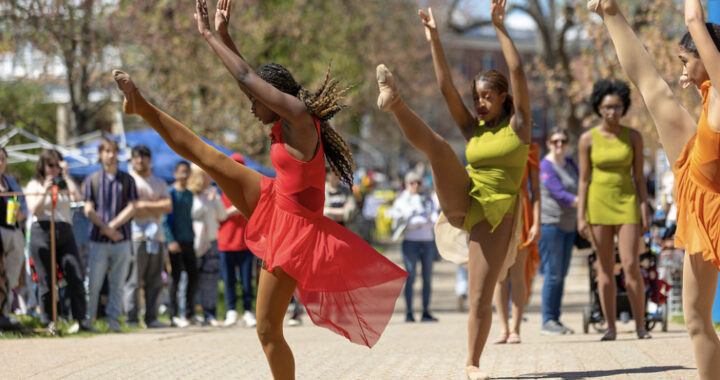Hammock accident spurs new guidelines
3 min read
Girard Bucello
By ESTER SALGUERO
The hammock trend that has become popular among universities across the nation has recently had a negative effect for the University of Mary Washington. A student was seriously injured on the evening of March 15 when a column fell on top of her at the amphitheater. The accident happened when she slung her hammock between a pillar and a tree, which sticks out of the platform.
That evening Juliette Landphair, vice president for Student Affairs, received a call from Ruth Lovelace, the director of Emergency Management, who told Landphair that she was in the hospital with the student. The freshman suffered serious injuries, according to a message sent out by Landphair the next day.
“When it comes to student safety one of the rules is to overreact,” said Landphair regarding the guidelines she sent out for hammocking after collaborating with Joni Wilson, director of Landscaping and public safety administration.
Friends of the student were at the amphitheater when the accident occurred. They were the ones who contacted UMW Police when the accident happened. The police and Emergency Management responded quickly by calling the ambulance and heading to the scene.
As a result of the incident, an advisory on the use of hammocks has been placed for students to consider. After the student was taken to the hospital, the amphitheater was surrounded with caution tape until the area was deemed safe.
Wilson met up with Lovelace and other administrators responsible for public safety to acknowledge the severity of the incident in order to decide what the next steps are for the university.
Landphair was curious to know what other universities have done in response to this new trend. The group of public safety officials found that many universities have banned the use of hammocks because of the adverse effects that it has had to trees on campus.
Landphair who is a fan of the recent trend known as enoing, does not want to ban the outdoor activity. Part of the reason why she admires this activity so much is because Landphair says she enjoys it when her daughter tells her she is about to go out enoing.
“I walk around campus and love to see the students hanging out in this healthy fun way which suggests that they are actually reflecting and relaxing a little bit,” Landphair said.
Wilson recommends that students use tree-friendly slap straps around the bark to ensure that little to no damage will be done to the trees on campus. She emphasized how important it is to protect the university’s trees, especially after the university has recently been recognized as a 2015 Tree Campus by the Arbor Day Foundation.
She also enjoys seeing students use hammocks on campus but is weary of the damage that may occur to trees which cannot sustain such pressures.
“I like to see the kids using the hammocks but there is just no denying that it can definitely have adverse effects on the trees,” Wilson said.
Wilson also advises against students using the cherry trees across from George Washington Hall because the bark is so thin it is like skin and can easily be scratched with just fingernails. She says using trees with chunky bark are best when picking out hammock supports.
Another student, freshman Mary Pagan, had also considered using the columns at the amphitheater to hammock but decided against it when she thought twice about the safeness of the structures. She usually slings her hammock between the cedar trees that form a fence like arrangement across from Trinkle Hall, however, she does not do it often.
“This is only my second time sitting in my hammock,” Pagan said. The advisory Landphair sent out has been supported by both students and faculty who acknowledge the safety concerns of these new guidelines. The University knows that a policy for the use of slacklines and hammocks has been needed due to an increase in this outdoor activity.
As of right now there are no conclusions about a policy on hammocking but the administrators hope to meet as soon as possible in April. Wilson, Landphair and members of the outdoor club will be defining the campus’s rules on hammocking.











